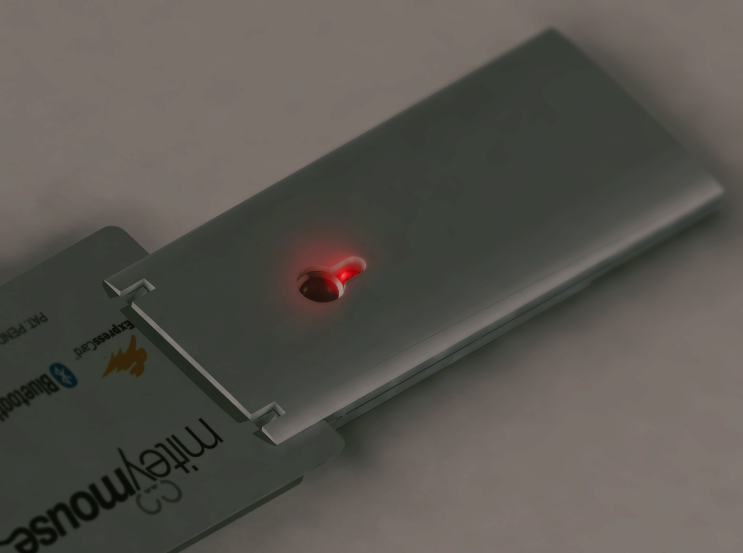The MiteyMouse project aimed to evaluate and develop the design possibilities for a miniaturised computer mouse, beginning with very specific and restrictive parameters, and creatively addressing those limitations.
Design © Jeremy Hall 2008. 3D design in Solidworks 2007, rendering in Maxwell Render. Technical illustrations in Adobe Illustrator.
Working within these parameters of physical space and ergonomics, a concept was prototyped and iteratively developed (using maquettes and 1:1 models) with a unique and novel feature; the use of a standard 1.5mm plastic card to provide an additional area for the heel of the hand to rest.
- Micro-sized wireless mouse
- Fits in the ExpressCard /34 port of your Macbook Pro
- Uses a standard 1.5mm plastic card to massively increase usability by offering a palm rest surface.

The 2007/2008 generation of Apple Macbook Pro notebooks include an expansion slot known as an ‘expresscard /34’ slot and it is observed that – for various factors – for the majority of users, this slot is largely unused and left vacant.
The slot has a sprung flap that covers it when it is unused, making it the perfect hideaway spot for an accessory. A notebook trackpad is often considered as inferior to a mouse for many input tasks, and so the inclusion of a travel mouse/presenter remote in this inconspicuous cavity is ideal.

The design features an internal, non-replaceable, rechargeable lithium button cell battery (with fast charge times), high quality optical sensing components, bluetooth wireless radio, and specialised Surface Acoustic Wave lateral sensing technology.

The mouse borrows aesthetic values observed in popular Apple notebooks in order to align itself with the Apple product family, and products such as the Macbook Pro – i.e fine alloy finishes, close machining tolerances, and a smooth exterior which does not reveal the inner mechanics or workings of the device.

A component of the project’s final presentation was an explanatory “User’s Guide”, printed and distributed as a booklet and intended to explain clearly the design solution, whilst playfully mimicking the instructional guides found in many other consumer electronic products.

This project formed part of my final assessment in 2008.